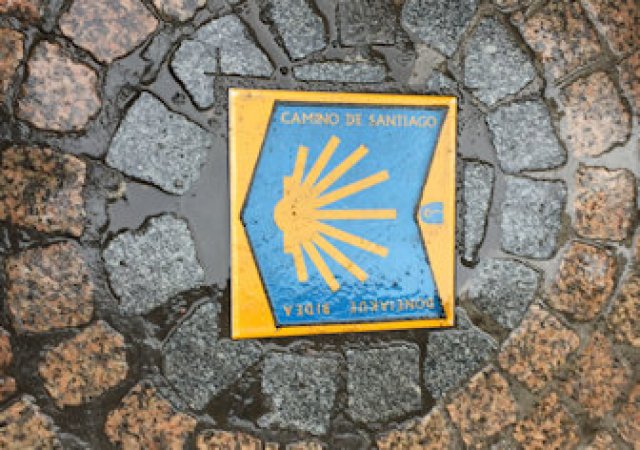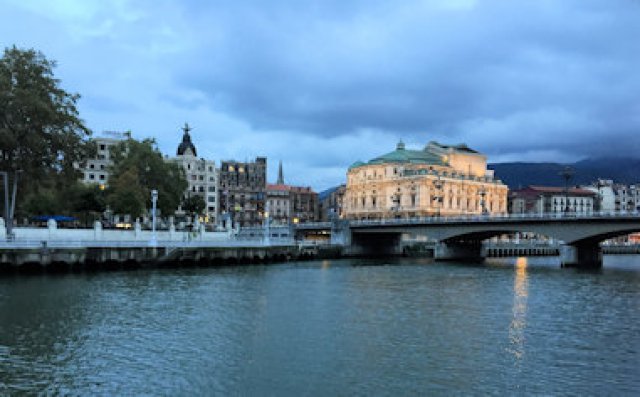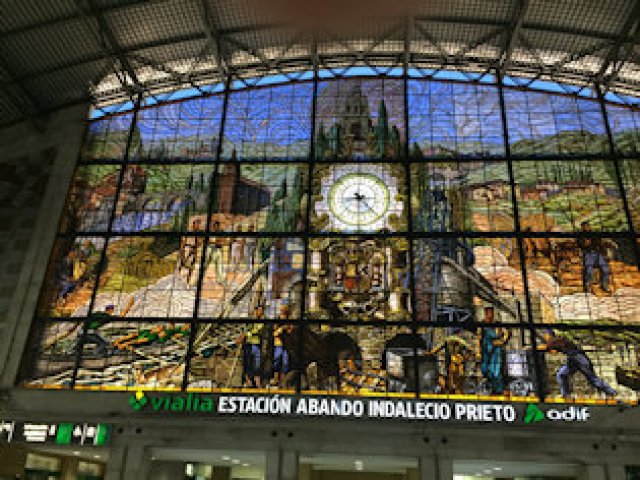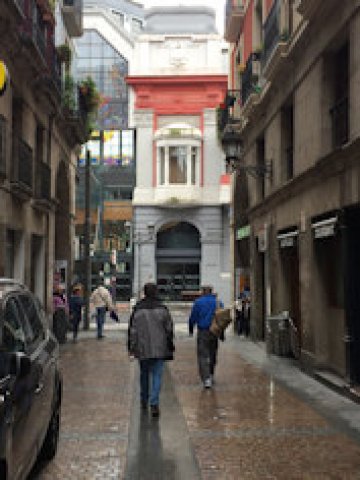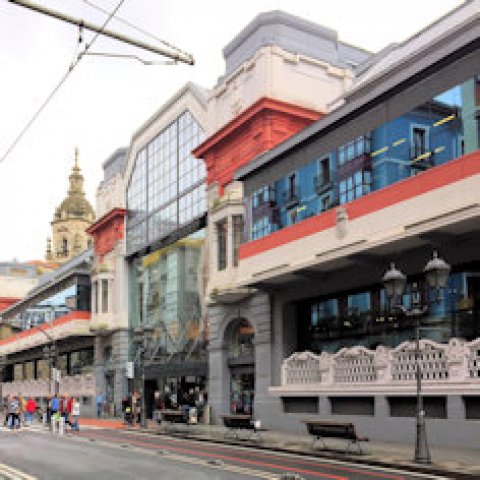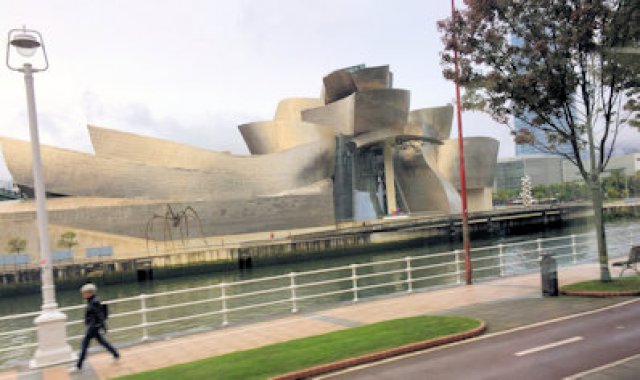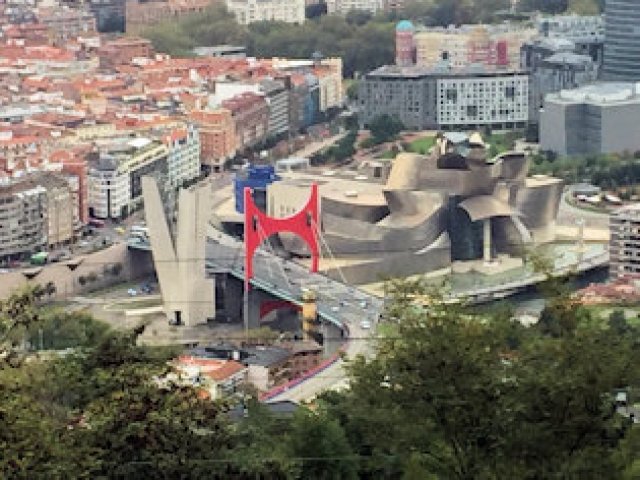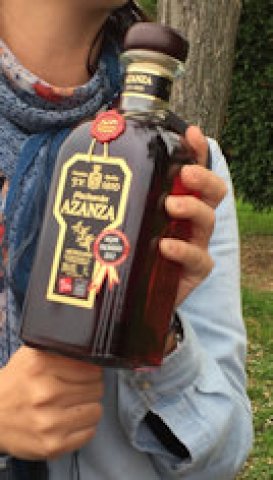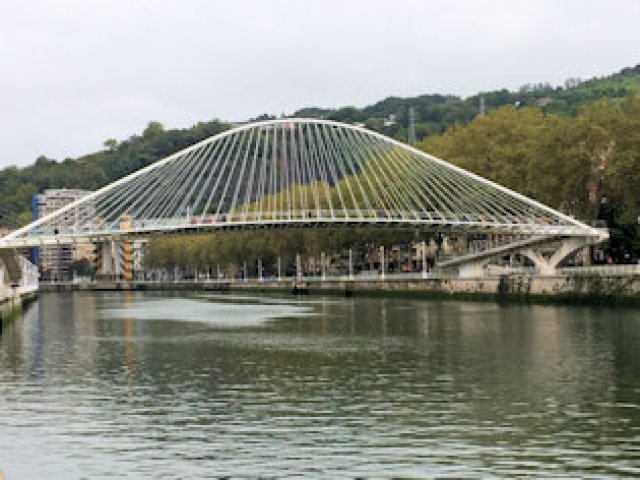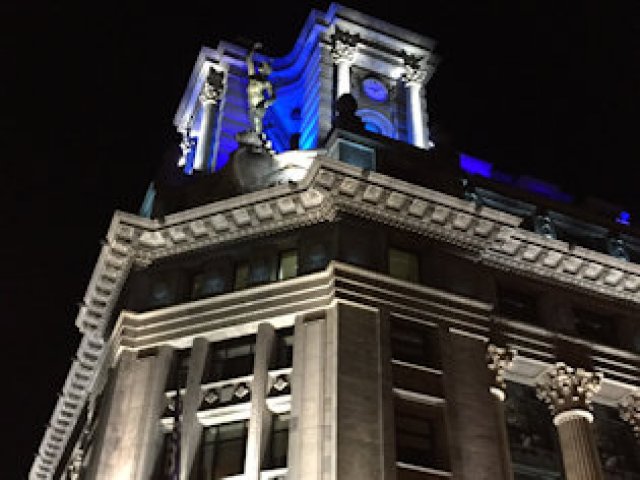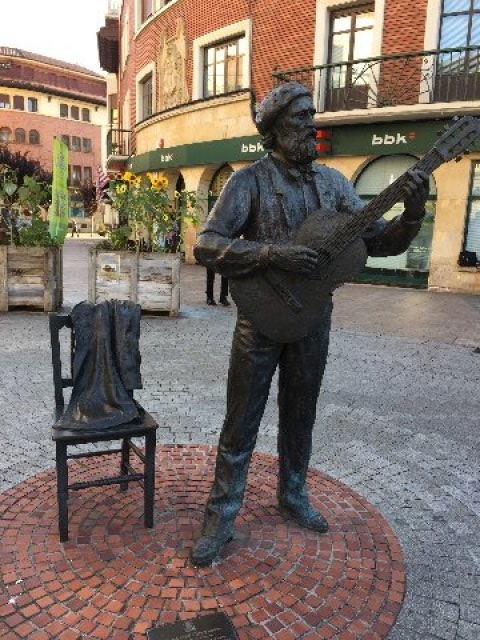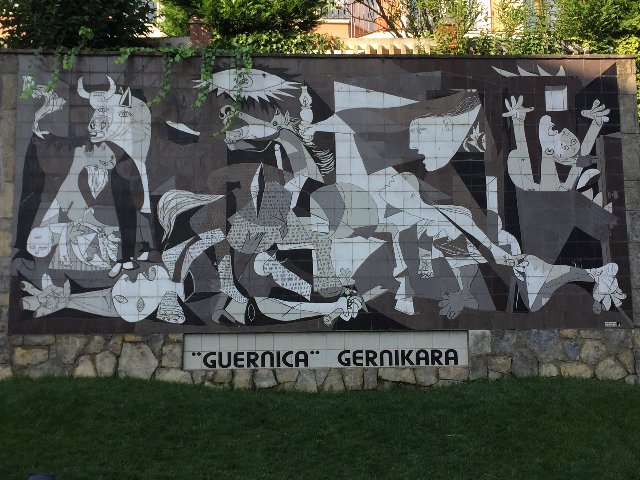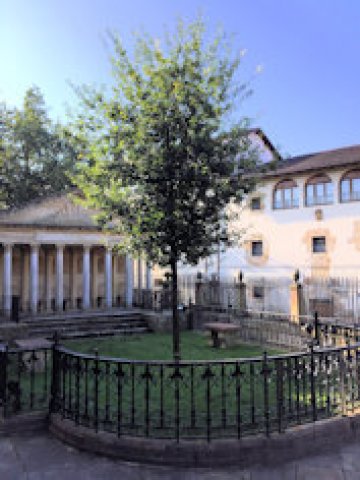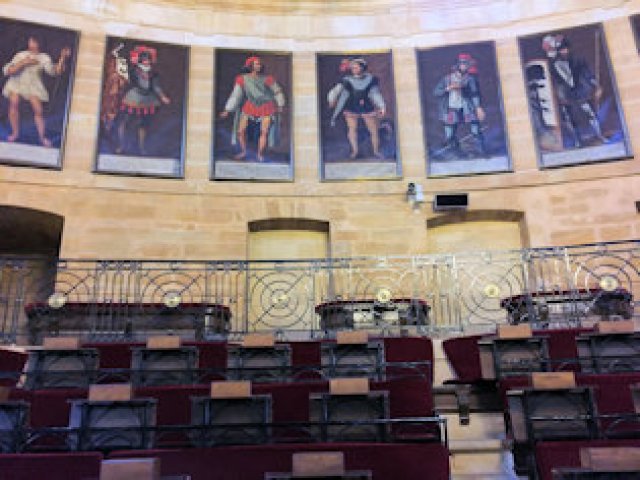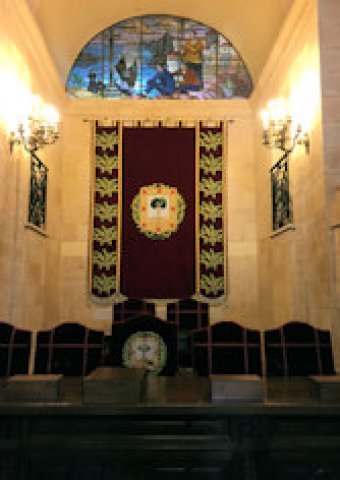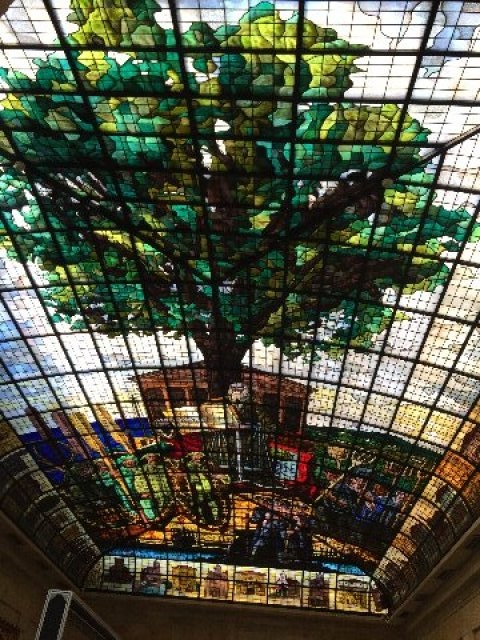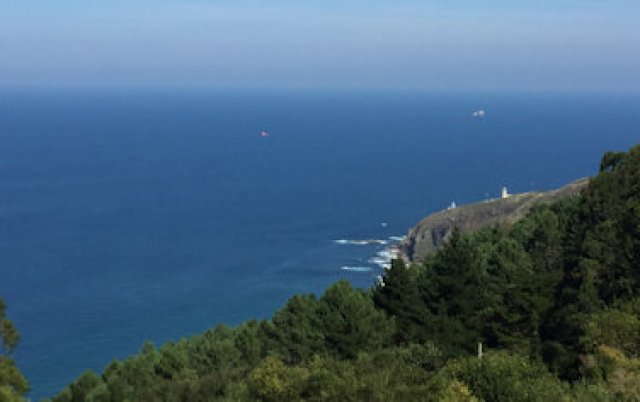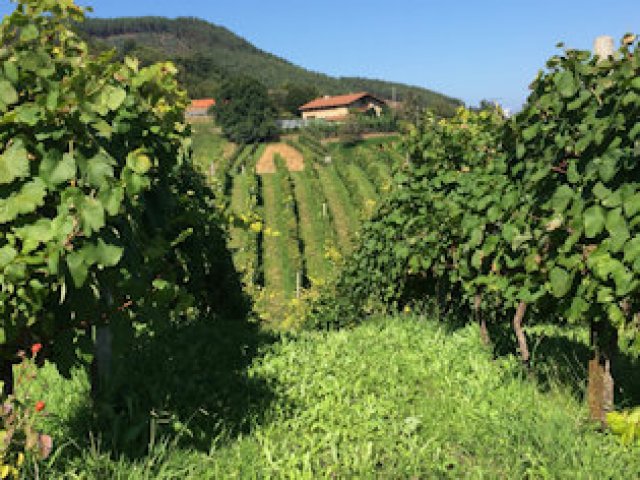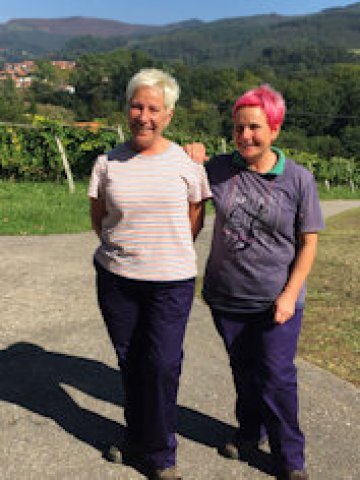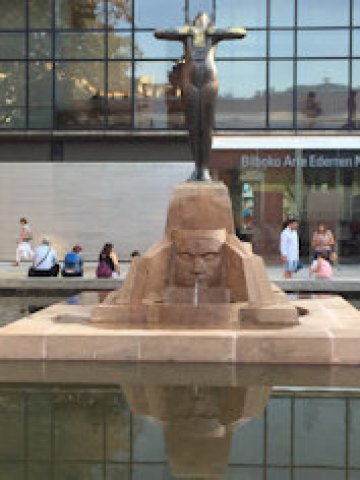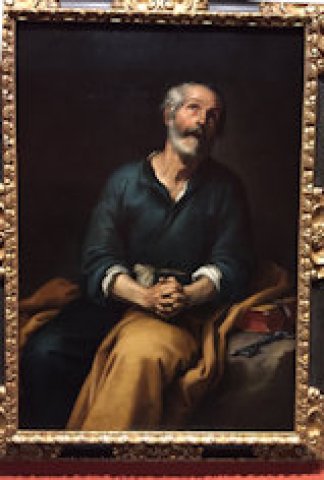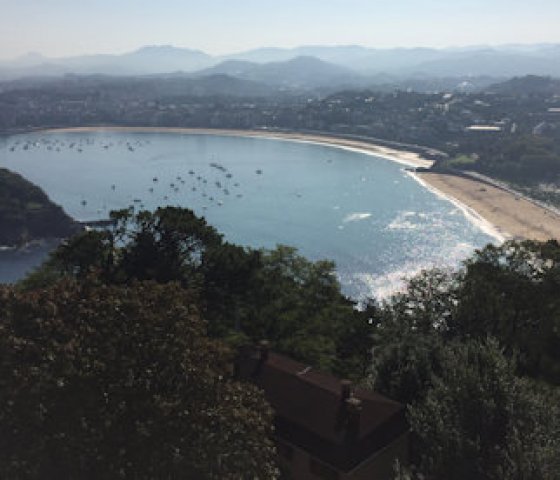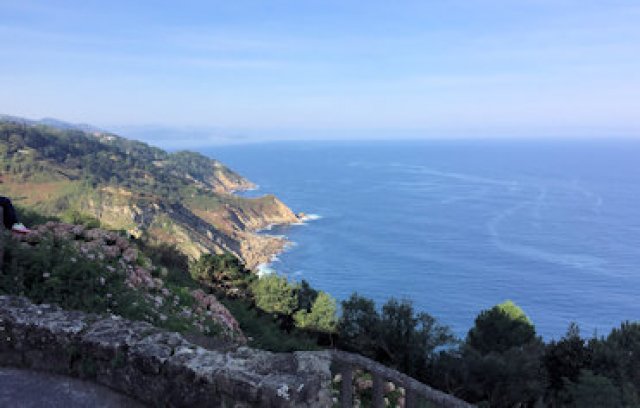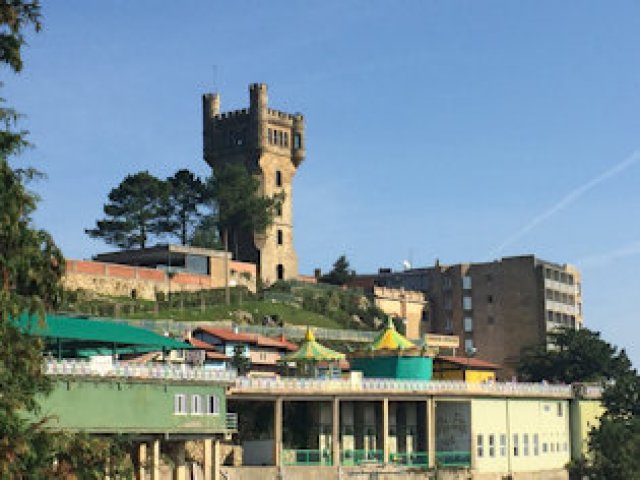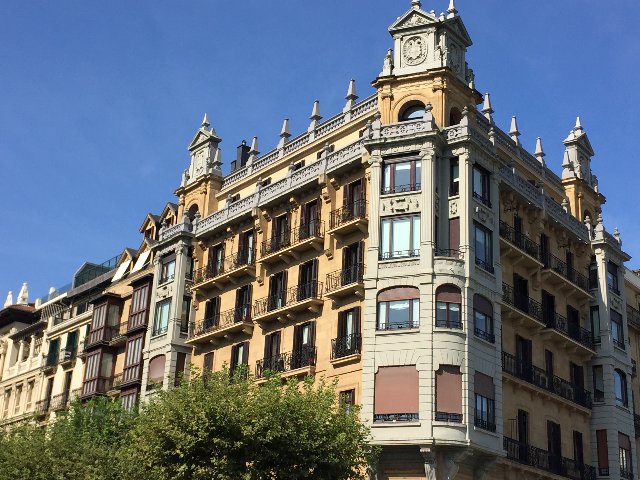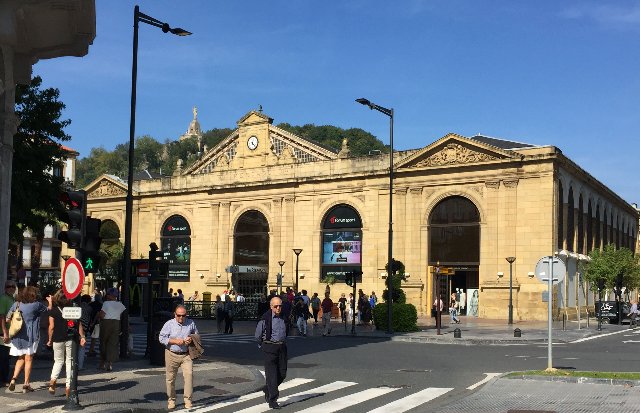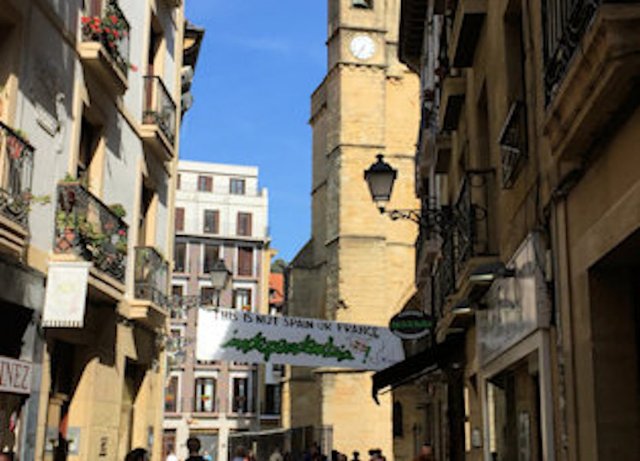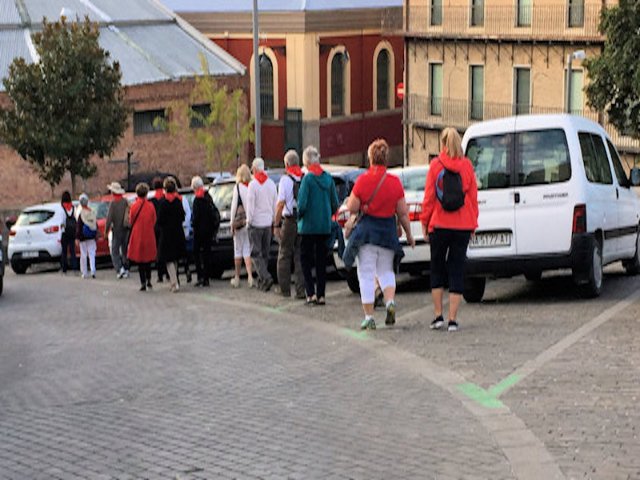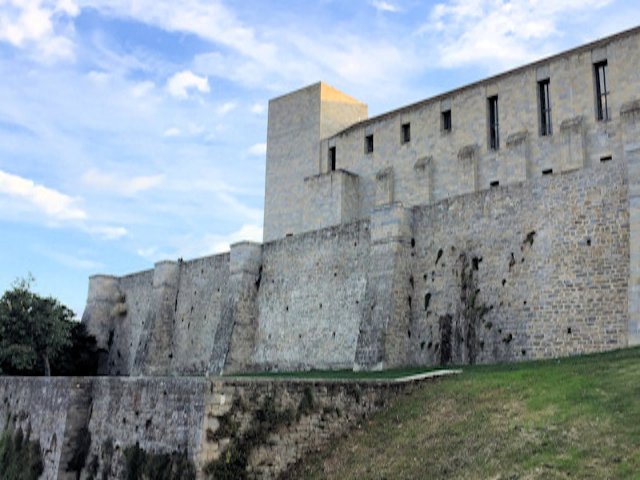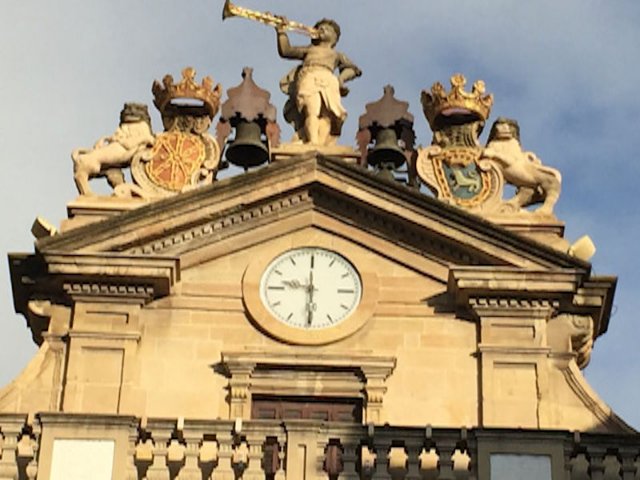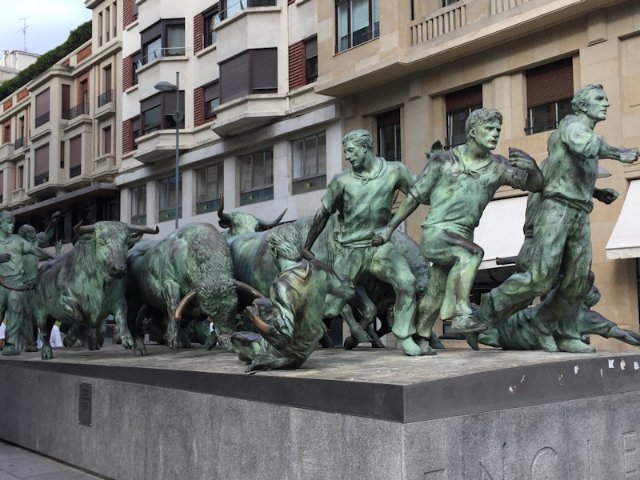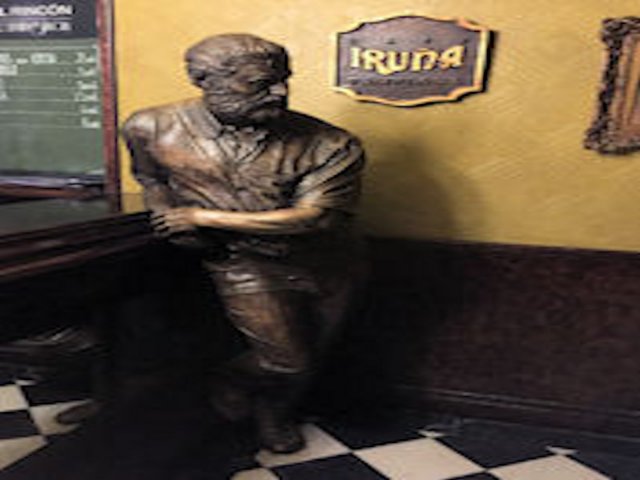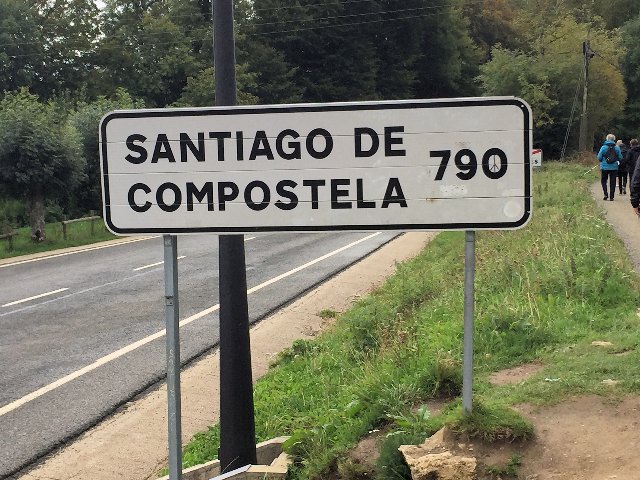Northern Spain
The Basque Country
By: Zeren Earls - Mar 12, 2018
After journeying five memorable days along the foothills of the Pyrenees in southern France, seven of us arrived in Bilbao, capital of the Basque country in northern Spain, to meet up with the other members of our full group of 16. We entered the city at dusk under the glow of street lights reflecting on the waters of the Nervion River, lined by buildings with ornate facades near the Saint Anton Bridge. After a welcome drink and orientation meeting at the Hotel Abando, walking to dinner in the vicinity gave us a glimpse of the city's splendid array of eclectic architecture, including its unique train station with a large stained-glass window inside. Occupying an entire wall along with a clock, the window depicts the history of the city, including Basque farm houses, the church, and various industries. My appetite whetted with this brief introduction to the city, I looked forward to our walking tour the following day.
In the morning we started out in the medieval old town, where most of the narrow streets are a pedestrian zone during the day. As we walked about, noticable markers in the pavement pointed to the Camino de Santiago (Way of Saint James), a medieval pilgramage route ending at a cathedral where the bones of Saint James are believed to be buried. Near the old town by the right bank of the Nervion River is the Ribera Market, 10,000 square feet in size and known as Europe's largest covered market. It echoes the commercial spirit of its original "Seven Streets" neighborhood, lined with butcher shops, fish stalls, mounds of produce, cheeses, olives, wine, and tapas.
The highlight of our morning tour was the Guggenheim Bilbao Museum. Architect Frank Gehry's sculptural building, cornerstone of the city's urban renewal, and the unique art it houses have put the former industrial city on the tourist map in the twenty short years since its opening in 1997. (See separate article Guggenheim Bilbao at Twenty: An Impressive Success Story, posted on BFA in early November).
Later in the day, we took a funicular railway to the top of Mount Artxanda for a panoramic view of Bilbao, which covers a metropolitan area of one million people. Following a brisk walk through the paths of Artxanda, at a spot with a bird's eye view of the Guggenheim Museum, our trip leader Diana uncorked a bottle of patxaran to introduce us to the Basque liqueur, made from sloe berries, with its distinct flavor.
After a funicular ride downhill offering different views of the city below, we walked across the Zubizuri (Basque for "white Bridge"), a tied arch footbridge stretching like a gigantic fishnet across the Nervion River and unique among the city's seventeen bridges. Our day's excursion ended with a welcome dinner at Cafe Iruna, a historic restaurant dating from 1903 with stained-glass windows and a carved wood ceiling. Dinner introduced us to an array of pinxtos (Basque for tapas), beginning with cold ones such as salmon and goat cheese on bread, baby eels in a creamy spread, and smoked ham patties, followed by warm breaded cod balls, zucchini and goat cheese on toast, and pork on skewers.
On our last day in Bilbao, we set off to explore the nearby Basque coast, stopping on the way in Guernica, the city largely destroyed in bombing by the German Luftwaffe in 1937 during the Spanish Civil War, as it was the seat of the republican movement against the Franco nationalists, supported by the Germans. Upon arrival, we viewed a tiled mural reproduction of Picasso's famed painting, Guernica, depicting suffering and destruction. "Claiming the painting for Guernica", the mural is a potent reminder of the horrors of war. The original painting is in the Reina Sofia Museum in Madrid.
Among the city's attractions are two miraculous survivors of the bombing - the Assembly House and the nearby Tree of Gernika (Basque for Guernica). Both are symbols of the Basque people's history, as they were the meeting point for all territories of the Bizkaia region. The Tree of Gernika, planted in 2015, is a fifth-generation offshoot of the old tree under which assemblies were held. In the house, the Assembly Room, conceived as a church and parliament, has an impressive portrait gallery of the Lords of Bizkaia and an altar in the apse. In a separate room, the symbolism of the oak is repeated in a large stained-glass window depicting the first meetings held by people from different regions under the tree. Framing the window is a border of boxes showing representative monuments from different places throughout Bizkaia.
The Spanish Basque currently enjoy a certain amount of autonomous rule granted by the Spanish government. Yet many of Spain's 850,000 Basques yearn for total independence, feeling quite capable of governing on their own and wanting to prevent the decline of their language and the draining away of their wealth. The new town of Guernica, with the exception of a few historic buildings, is a modern city with parks, tree-lined streets, shops, and outdoor cafes. In a local restaurant, we had a typical Basque lunch of vegetable stew, beef and potatoes, and flan for dessert, before continuing on our way north to the Bay of Biscay.
Stopping along the way to enjoy the picturesque coastline, we reached Bakio, a small town in a valley surrounded by mountains on three sides and opening onto the Cantabrian Sea in the north. Here we visited a small family-run vineyard with a 100-year-old renovated farm house. The two sisters who run the countryside vineyard and wine cellar introduced us to the region's txakoli wine, a sparkling dry white with a short life span. A Basque favorite, the wine is usually consumed within a year of bottling.
Later in the afternoon, we returned to Bilbao with time left to be on our own, I took this opportunity to go to the Bilbao Fine Arts Museum, which has a vast collection of paintings, sculptures and works on paper ranging in time from the 13th century to the present day. Besides works by Old Masters, the exhibits include modern and contemporary art with a particular emphasis on paintings from the Spanish and Flemish schools and works by Basque artists. Works by Spanish painters El Greco and Murillo and Basque artists Jorge Oteiza and Eduardo Chillida make the visit all the more compelling. A wall text about American painter Mary Cassatt's Woman Sitting with a Child in Her Arms states that it is the only work by her in a public collection in Spain. My tour ended with a walk about Bilbao by night. Observing buildings, fountains and monuments delineated in lights enhanced the indelible imagery of the city.
In the morning, we departed for Pamplona, stopping on the way at the seaside city of San Sebastian, or Donostia in Basque. Before entering it, we drove up Mount Igueldo for a panoramic view of the city on the Bay of Biscay. La Concha ("Scallop") Beach (so called for its shape) shimmered below us with its golden sand, while El Torreon, a reconstruction of a 16th-century tower that served as the city's first lighthouse, was attractive with its grand presence on the hill. On the backside of the mountain, the vast ocean stretched before us as far as the eye could see beyond the craggy coastline. After about an hour, satiated with panoramic views, we descended to the heart of the city.
San Sebastian is an elegant city with an attractive coastline, beautiful beaches, gardens, historic churches, residential buildings, monuments, and an old town with narrow cobblestone streets. As we walked about town on our way to Bretxa, a traditional market that has been in operation since 1871, we passed under banners, stretched across narrow streets, with nationalist slogans, calling for Basque independence. Following lunch in a local restaurant, we headed to Pamplona, the city famous for its running of the bulls and for being the setting of Hemingway's The Sun Also Rises.
Pamplona is a fortified city within protective walls, dating back to Medieval times, when it was capital of the Kingdom of Navarra. We entered the city on the eve of September 24, when locals honor San Fermin, the city's patron saint. Although the San Fermin Festival has been moved to mid-July to combine it with the popular running of the bulls and make the celebration a major tourist attraction, the locals still celebrate its origins in September. Thus, we were able to join the merrymakers on the populated streets.
In the morning, donning the traditional red and white colors of the festival, we walked the route of the bulls to the arena, imagining the houses along the way with their small balconies jammed with people. The tradition goes back to medieval times, when the bulls used to be driven at dawn from outside the city walls through the streets to the public square, which served as a bull ring, while young men raced ahead of them. The raucous and sometimes deadly running of the bulls during the San Fermin Festival attracted Ernest Hemingway, inspiring him to write The Sun Also Rises, based on his experiences in Pamplona. Today his statues and name grace public places, while a monument to Encierro (Bull Run) by Rafael Huerta captures the mozos (runners) being pursued by the bulls. The week-long San Fermin Festival starts on July 6 and ends on July 14 with the running of the bulls, attracting an international crowd.
Besides being a historical city with notable architecture, Pamplona is near a major pilgrimage route of the Camino de Santiago. Refueling with a delicious lunch after enjoying the path of the bulls, we began the first of our several pilgrimage walks in the village of Roncesvalles before leaving Pamplona the next morning.
(To be continued)

